The Lake District National Park comprises 912 square miles of high mountains, lakes, rivers and coastline. No wonder, then, that it was loved so dearly by Beatrix Potter, Alfred Wainwright, Arthur Ransome, and William and Dorothy Wordsworth – along with the 16 million visitors it receives every year.
There are hundreds of miles of footpaths in the Lake District, so no matter what your ability, the chances are there is a walk for you.
But for those seeking a little guidance, we've put together a list of what we believe to be the very best walks in the Lake District, from family-friendly forest rambles and easy waterfalls walks, to superb circular routes and spectacular mountain hikes.
Looking for more walks in Britain's national parks? Check out our favourite routes in the Peak District, Yorkshire Dales and North York Moors.
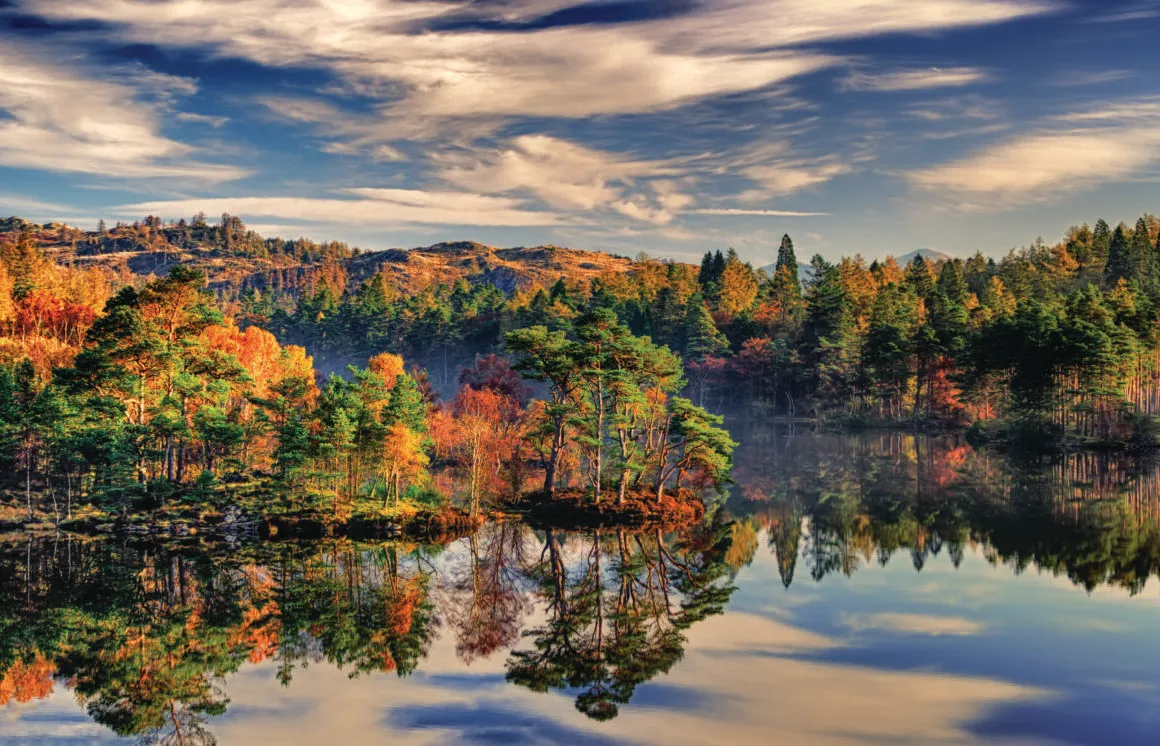
25 gorgeous walks in the Lake District
Skiddaw
7.6 miles (12.2km) | 5 hours | challenging
Climb to the 931m summit of Skiddaw, one of the Lake District's most iconic mountains, and discover a tremendous outlook – to the south, a massed army of fells; to the north, Scotland beckons.
Walkers get a leg-up by starting at almost 300m above sea level and then following a well-constructed path almost all the way to the top. The return route uses less frequented paths across Lonscale Fell.
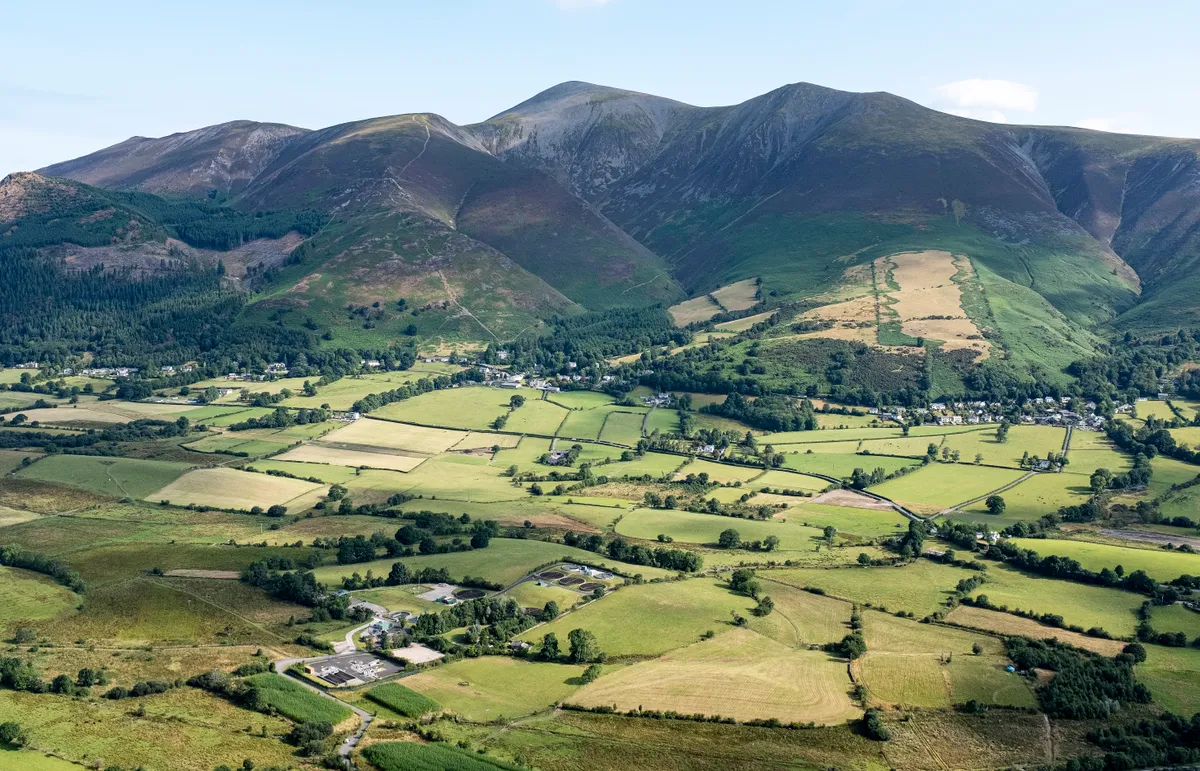
Tarn Hows
1.8 miles (2.9km) | 1.5 hours | easy
This dark, mirror-like body of water is surrounded by atmospheric woodland, with snatched glimpses of dramatic mountain scenery constantly appearing and disappearing.
If it all sounds too good to be true that’s because, in some ways, it is – Tarn Hows is actually a Victorian construct. It started life as three small pools, but the landowner, James Garth Marshall, dammed one of them in 1865 to create the single tarn that exists today. With ideas based on Romantic notions of the ‘picturesque’, he also planted trees, intending both to frame and reveal views of his creation.
This short walk on undulating but surfaced paths can be accessed from the National Trust car park. There are toilet facilities here and free Tramper mobility scooters for the less able. (The latter should be booked in advance.)
Tarn Hows walking route and map
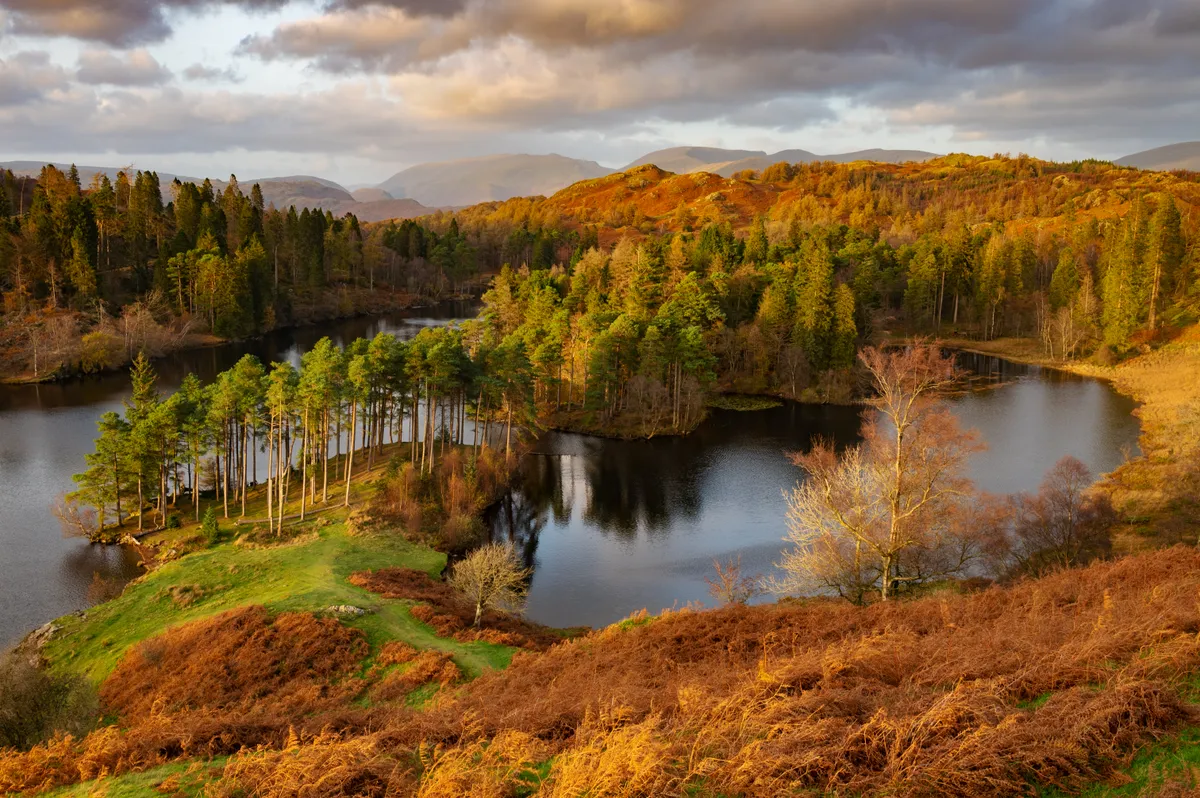
Aira Force to Raise
11.8 miles (19km) | 8 hours | challenging
From the wooded shores of Ullswater (one of the UK's most beautiful lakes) where swans glide gracefully on Lakeland’s second largest body of water, to rocky mountains where peregrines chase down their prey with brutal efficiency, this walk takes in a massive range of habitats.
Wood pasture, high grassland, rugged fells and even a Victorian arboretum can all be seen along the way. There's also a cafe at the bottom of Aira Force so you can enjoy well-earned refreshments post walk.
Aira Force walking route and map
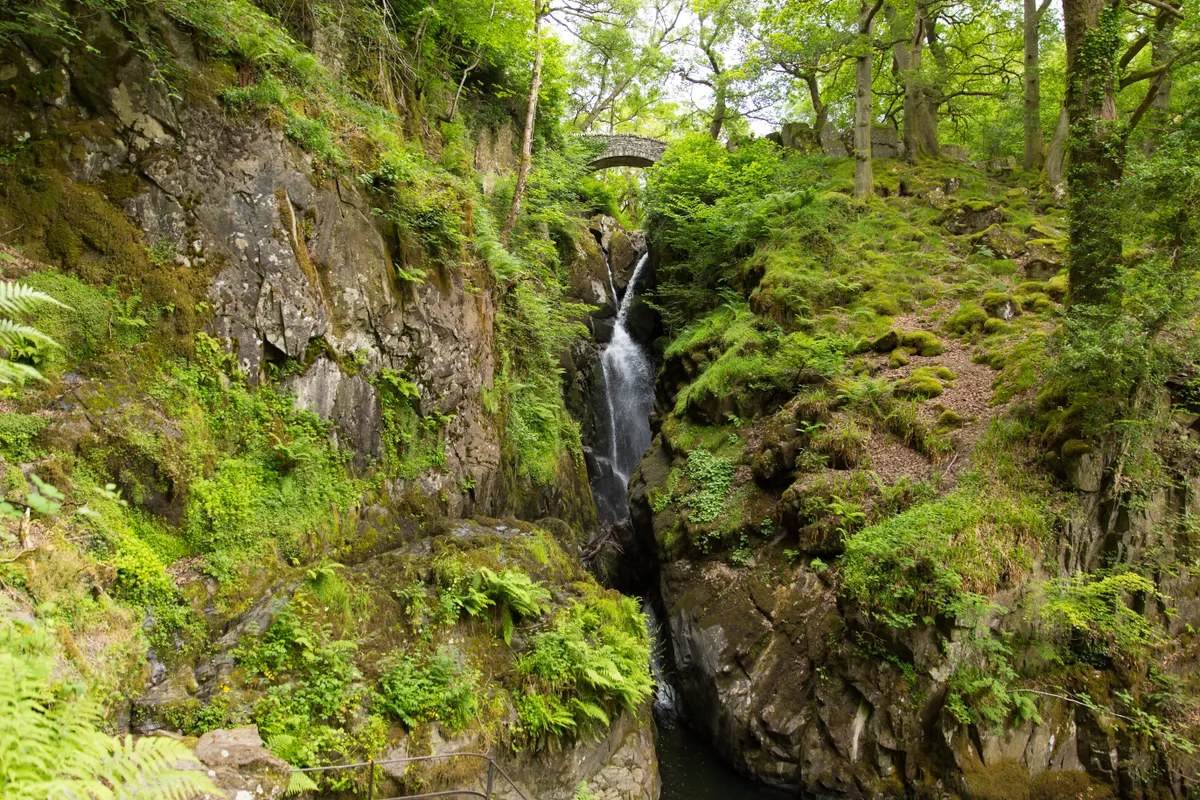
Buttermere and Rannerdale Knotts
7.5 miles (12km) | 4 hours | moderate
Henry David Thoreau wrote of tramping eight or 10 miles to “keep an appointment with a beech tree, a yellow birch or an old acquaintance among the pines”.
Here in the Lakes, visitors can do the same with a walk of about eight miles, first climbing to the crest of Rannerdale Knotts before returning via the iconic Buttermere Pines.
Buttermere walking route and map
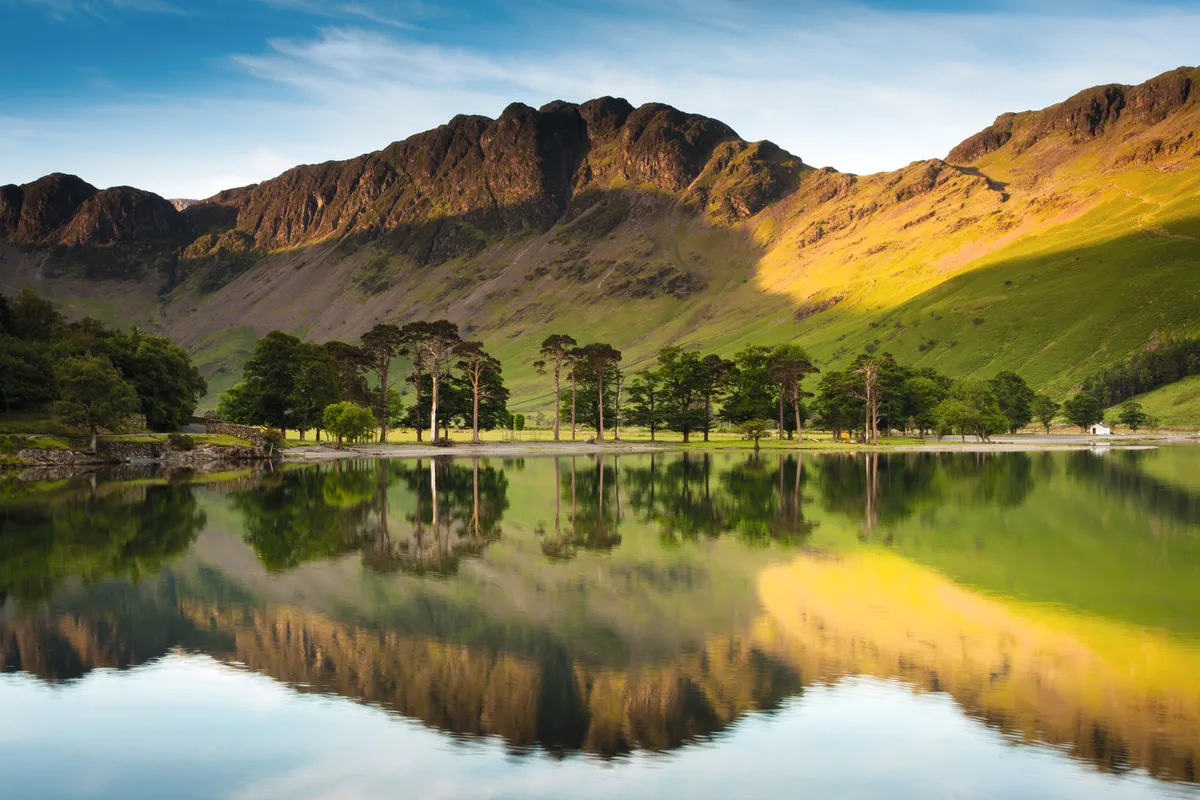
Rydal and Grasmere
6 miles (9.7km) | 4 hours | moderate
On 23 October 1802, Dorothy Wordsworth wrote in her journal: “A breathless, grey day that leaves the golden woods of autumn quiet in their tranquillity, stately and beautiful in their decaying. The lake is a perfect mirror.”
This six-mile circular tour around Grasmere and Rydal Water illustrates perfectly how her description of the autumnal landscape is just as evocative today as it was when she wrote it in her journal 215 years ago. The route starts and finishes at Rydal, home to the Badge Bar – the perfect reward after a day on the trail. When you are in Grasmere why not drop into Dove Cottage, former home of the Wordsworths.
Rydal Water walking route and map
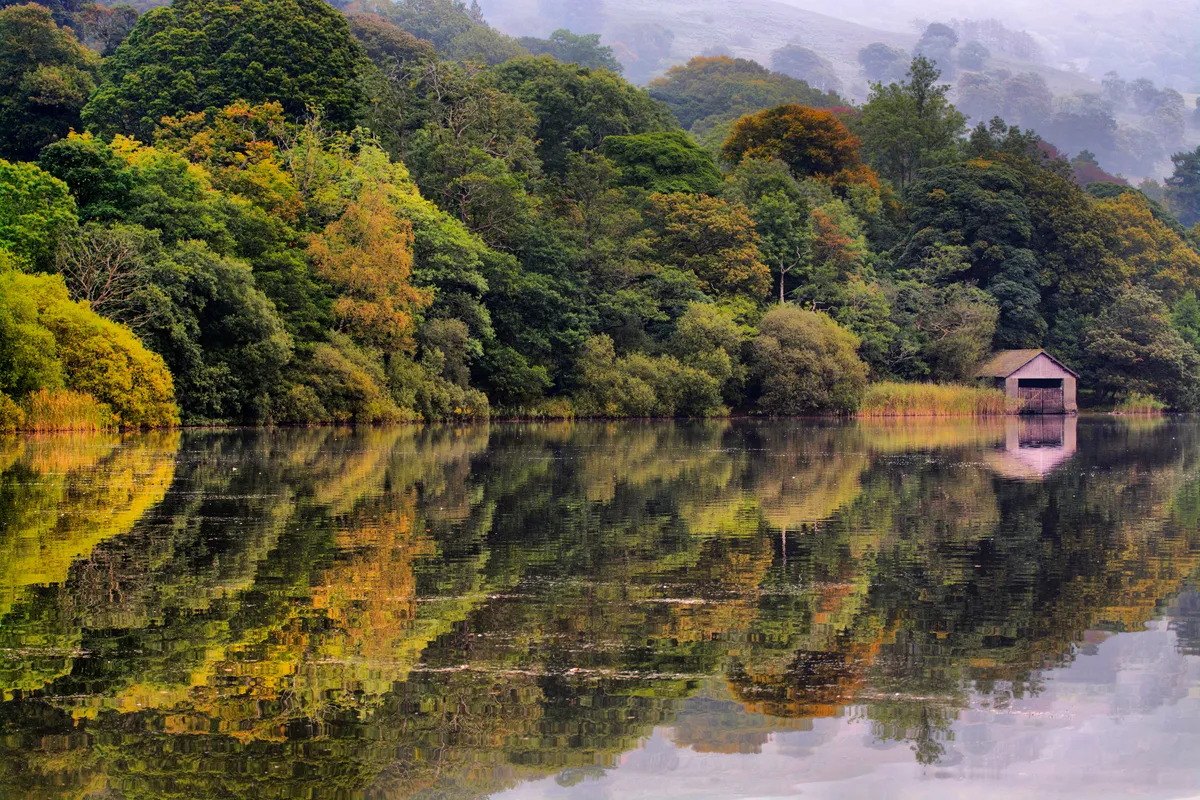
Cat Bells
3.5 miles (5.7km) | 2.5 hours | moderate
This iconic peak – believed to be a distortion of ‘Cat Bields’, meaning ‘the home of the wild cat’ – sits enticingly above the town of Keswick and Derwent Water.
Cat Bells is universally loved, and for good reason – the panoramic views of the Lake District from its summit are the perfect introduction to the national park’s mirror-like lakes, wild mountains and lush valleys
Cat Bells walking route and map
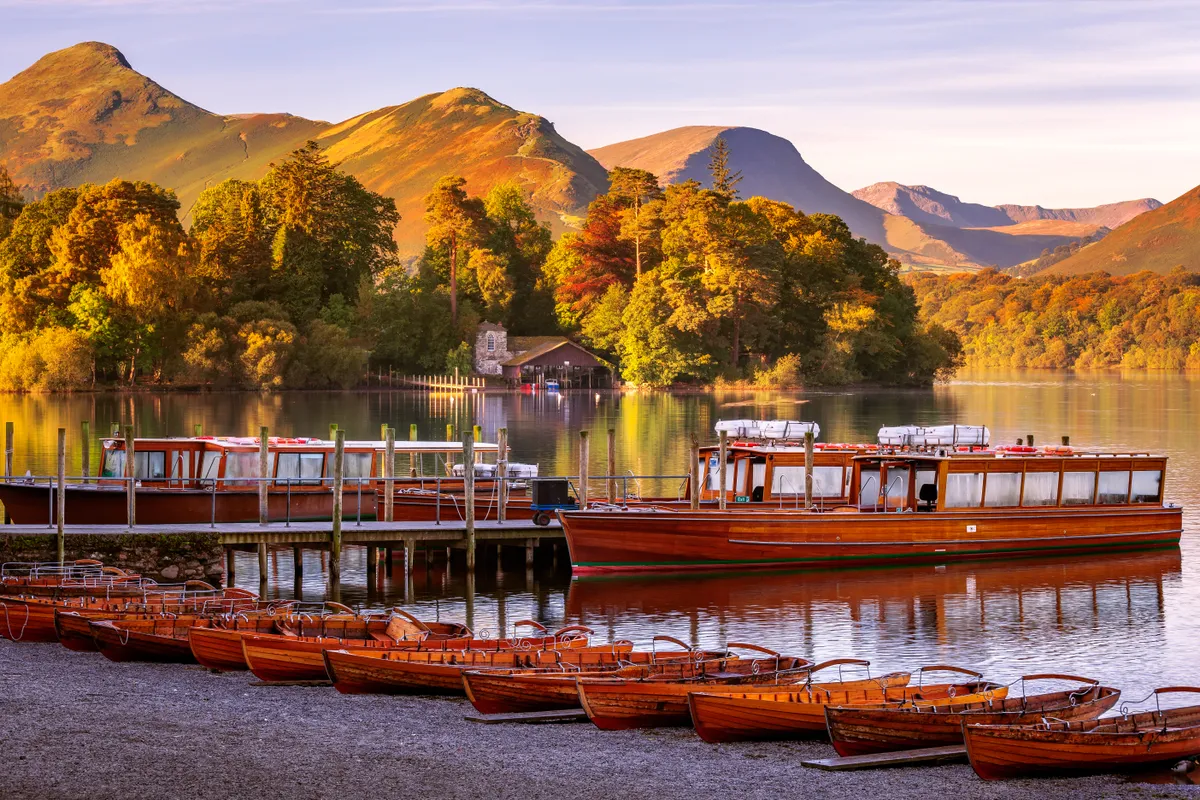
Blencathra
7.5 miles (12km) | 6 hours | challenging
Blencathra, known locally as Saddleback, is the 14th-highest mountain in the Lake District and was one of Alfred Wainwright’s favourite fells – and it is easy to see why. "The sight of it at close quarters," said Wainwright, "is sufficient to make a beholder about to tackle it forget all other worries, even a raging toothache.”
This stile-free circular walk takes in two of the 214 fells featured in Wainwright’s Pictorial Guide to the Lakeland Fells. Also known as Saddleback, the walk takes you from the Blencathra Field Centre to the summit of Blencathra, before dropping down onto Mungrisdale Common, returning to the starting point via the well-defined bridle path that contours around Blease Fell.
Blencathra walking route and map
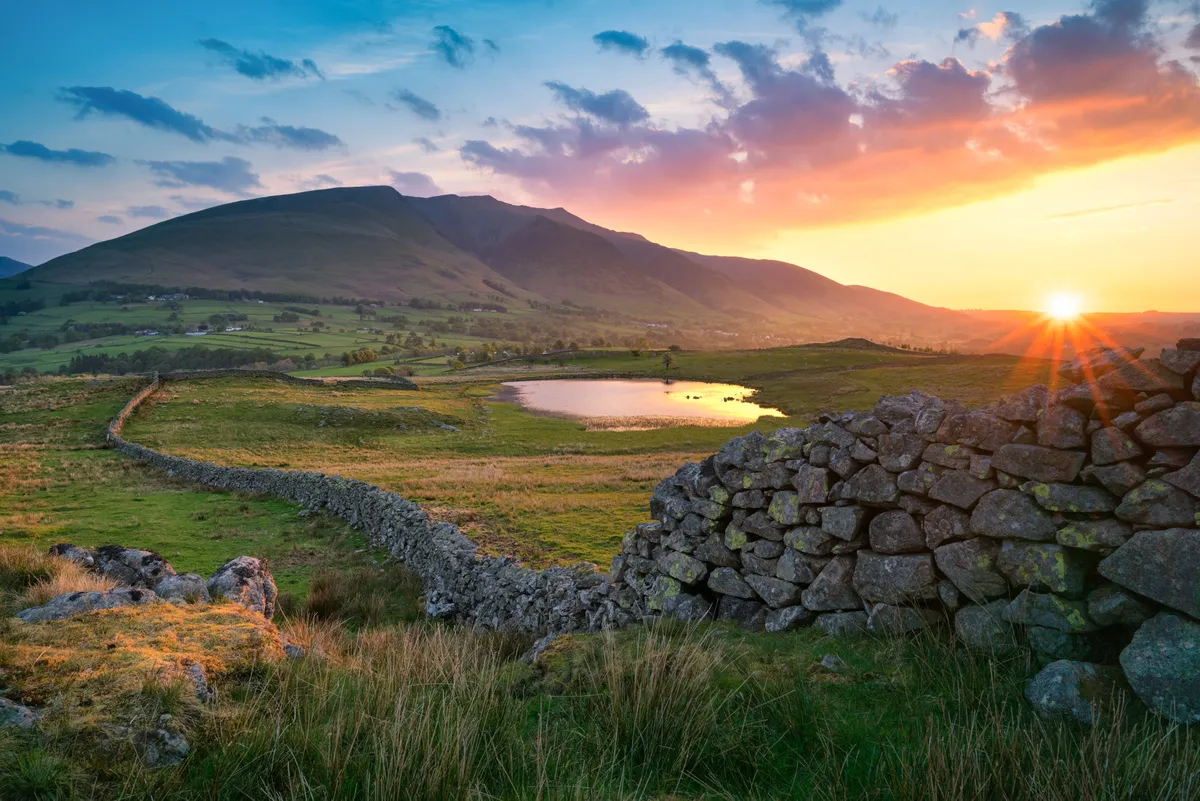
Scafell Pike
5 miles (8km) | 4 hours | challenging
While Scafell is the more formidable peak, its twin, Scafell Pike, is the highest summit in England, and is easier to climb. The views from the top are marvellous, stretching out across the Lake District to the Irish Sea and the Isle of Man.
Here, we describe one of the best routes up Scafell Pike, a challenging 5-mile circuit beginning on the shores of Wast Water.
Scafell Pike walking route and map
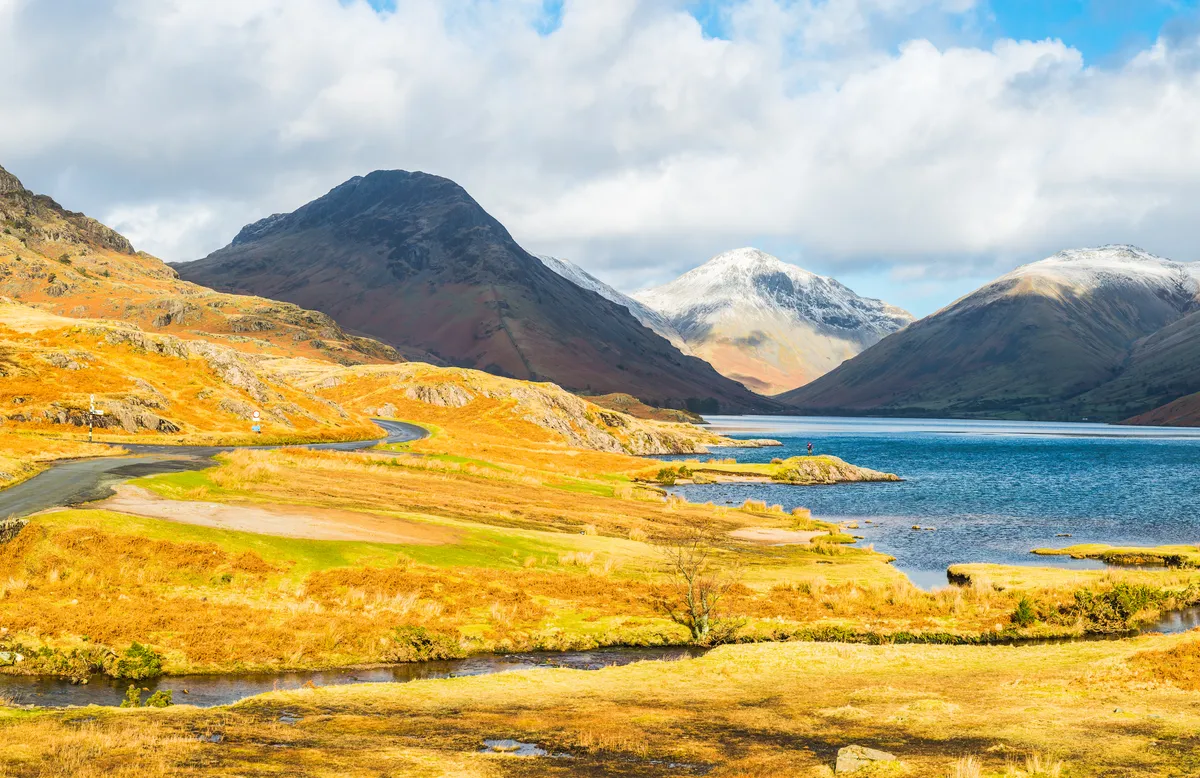
Mosedale Horseshoe
10.7 miles (17.2km) | 7-8 hours | challenging
Starting at Wasdale Head, under the shadow of Scafell Pike, this classic Lake District ridge walk loops the remote, bowl-like valley of Mosedale via a series of iconic peaks.
The walk ticks off five must-climb mountains – Pillar, Scoat Fell, Steeple, Red Pike and Yewbarrow – and serves up stunning views of others including the Scafell Massif and Great Gable. It’s a rough and rugged hike, with steep ascents and a touch of scrambling. It’ll test your legs and fitness, but it’s well worth the graft – particularly if you end with a pint and some pub grub at the charming Wasdale Head Inn.
Mosedale Horseshoe walking route and map

Haweswater to High Street
6.2 miles (10km) | 4.5 hours | challenging
The road alongside Haweswater to the car park feels like a route to isolation and wildness far from the popular spots of Ambleside and Keswick.
However, this area is full of human history just below the surface. Haweswater itself covers the former village of Mardale Green, which was evacuated prior to the valley being turned into a reservoir in the 1930s. Overlooking the lake is High Street, the highest peak in the Far Eastern Fells. Its summit has been used as a Roman Road, and later as a Racecourse for summer fairs in the Victorian era.
This route links the two features, a 6.2-mile circular walk from the shores of Haweswater to summit of High Street.
Haweswater and High Street walking route and map

Crummock Water
7.3 miles (11.7km) | 4 hours | moderate
With a gauze of mist hanging lazily over its dark waters and the bracken providing a vegetated backdrop, Crummock Water is an atmospheric place to visit no matter what the season.
On both sides of the lake, imposing fells rear up, adding drama to the scene.
Buttermere is our starting point for the circuit of Crummock Water, but first we climb to the head of Rannerdale to enjoy a stroll down this hidden side valley…
Crummock Water walking route and map
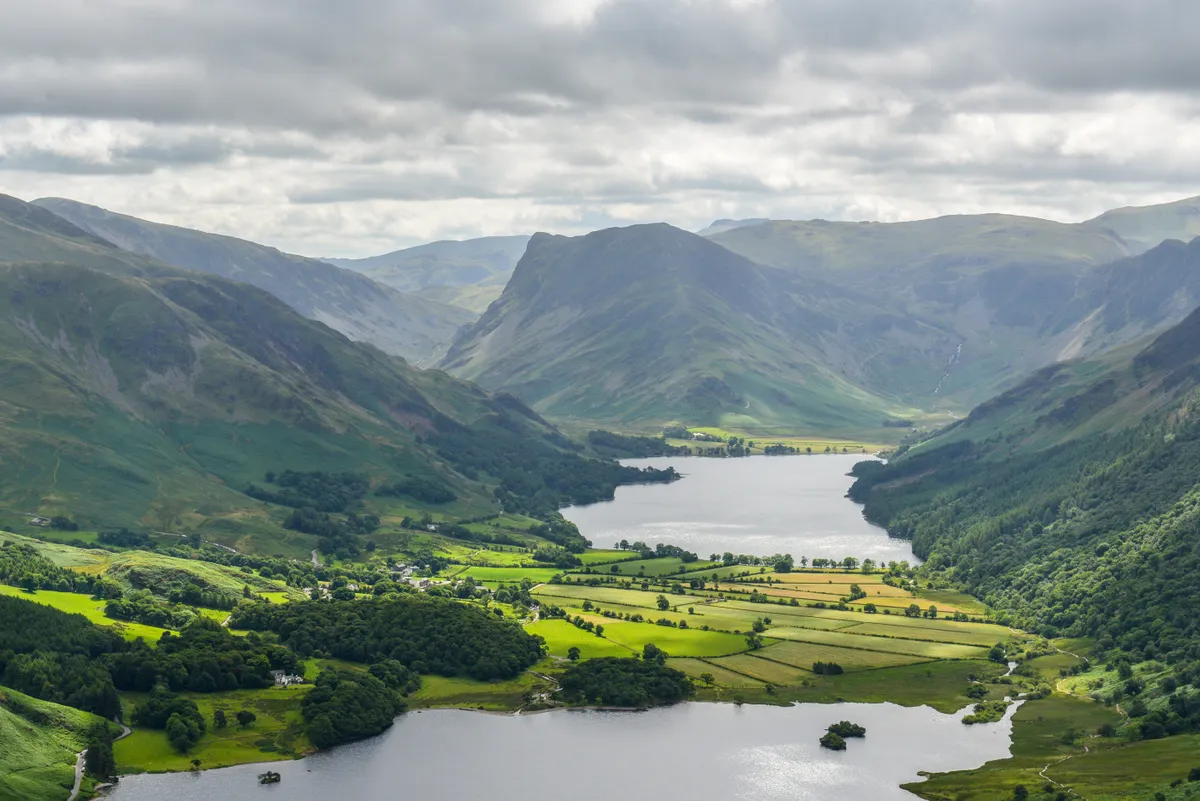
Loughrigg Fell
2.5 miles (4km) | 1.5 hours | moderate
Amid the tall, craggy splendours of the Lake District, it’s from the lower hills that you can sometimes, with surprise, discover the finest views.
At 335m in height, Loughrigg Fell doesn’t qualify as a mountain, yet it provides, in miniature, much of what the high peaks offer.
Loughrigg Fell walking route and map
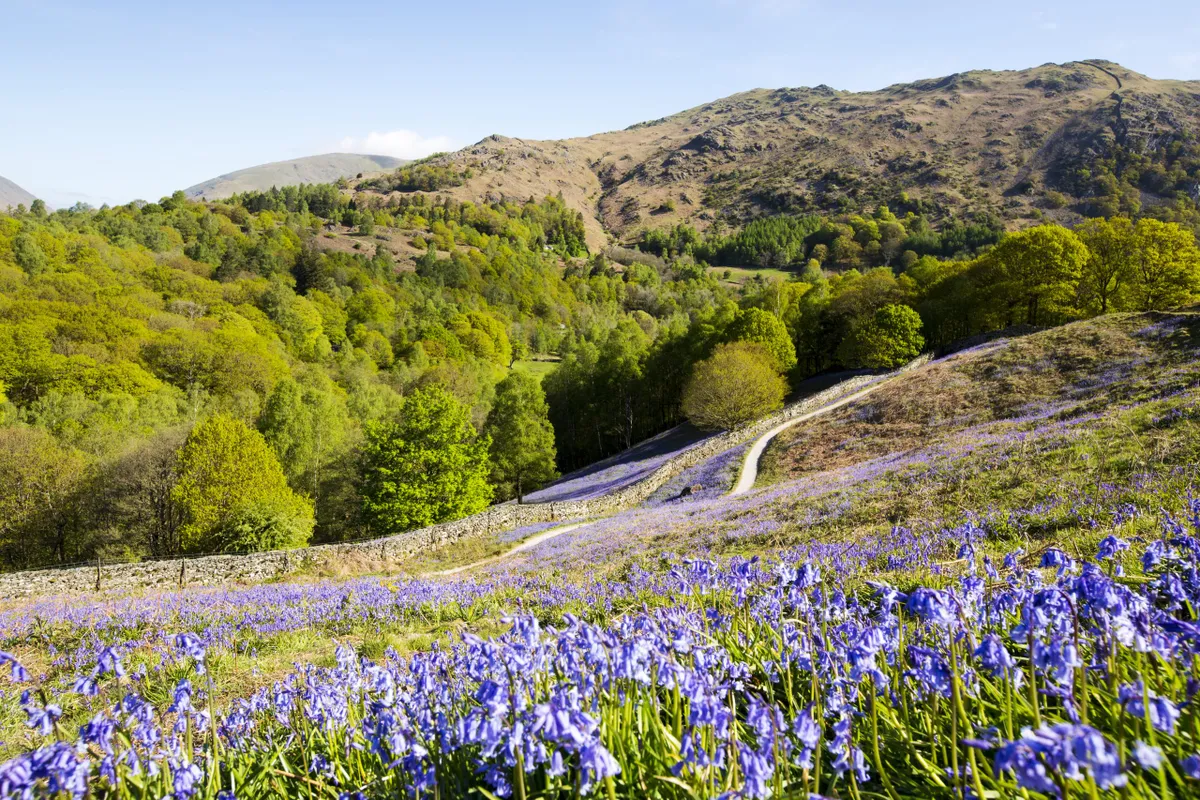
Orrest Head
4.5 miles (7.2km) | 3 hours | moderate
Follow in the footsteps of the Lake District’s most celebrated wanderer, Alfred Wainwright, spurred on by views of misty mountains, rambling vales and the largest natural lake in England.
For such modest effort, the reward is exceptional, and it is worth repeating that effort throughout the seasons. Choose a clear winter’s day when the snow on the range of the Lakeland fells seems to accentuate their height and ruggedness, and a cornflower-blue sky is reflected in the still waters of Windermere. Or visit on a soft autumn morning when a light mist shrouds Windermere from view, seeping into the colourful woodland that fringes the lake.
Orrest Head walking route and map
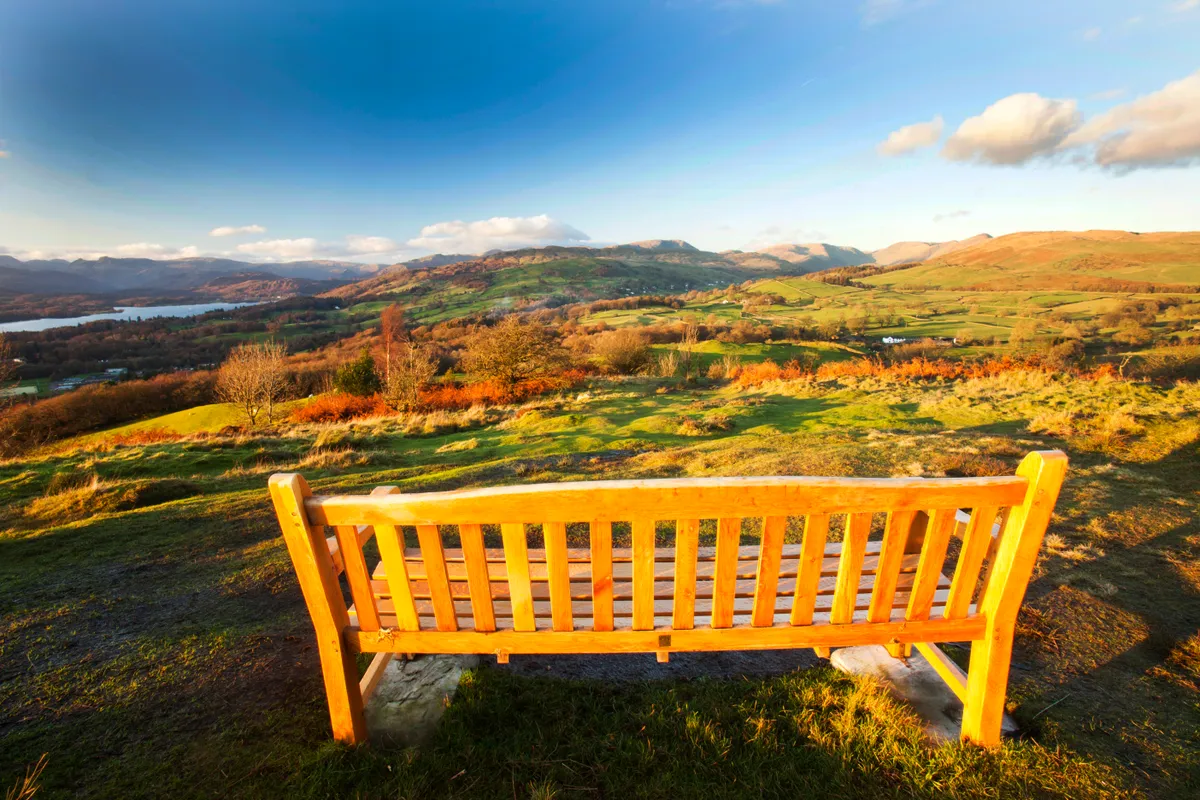
Rosthwaite to Grasmere
8.2 miles (13.2km) | 6 hours | challenging
The much-celebrated writer Alfred Wainwright is perhaps best-known for his seven guidebooks describing 214 fells in the Lake District, but his long-distance route across northern England – the Coast to Coast – is a close second in the hearts of British ramblers.
The 182-mile trail traverses the width of England, from St Bees Head in the west to Robin Hood’s Bay in the east. If you’re feeling intrepid, take on the whole 182-mile pilgrimage; or, if time is scarce, simply walk a stage or two.
One of the very best legs is the delightful Rosthwaite to Grasmere section. Crossing the Central Fells in the Lake District, this stage includes more than 700m of ascent.
Rosthwaite to Grasmere walking route and map
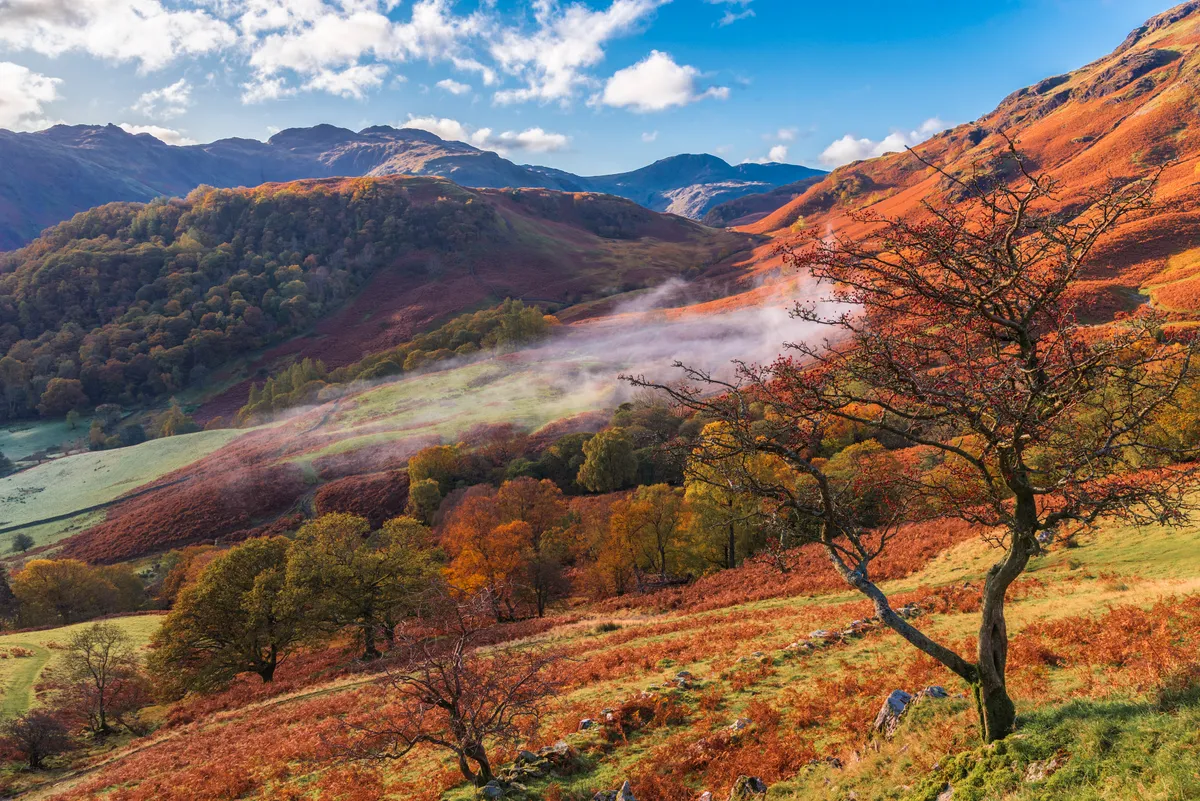
Lingmoor Fell Circuit
8.3 miles (13.4km)| 5 hours | challenging
This lowland loop walk through the heart of the Lake District National Park is packed with splendours – from glistening tarns and craggy fells to magical, mossy bridges.
The route starts with a short, sharp climb, but soon levels out, skirting the foot of Side Pike before slowly descending into Little Lansdale.
Lingmoor Fell walking route and map
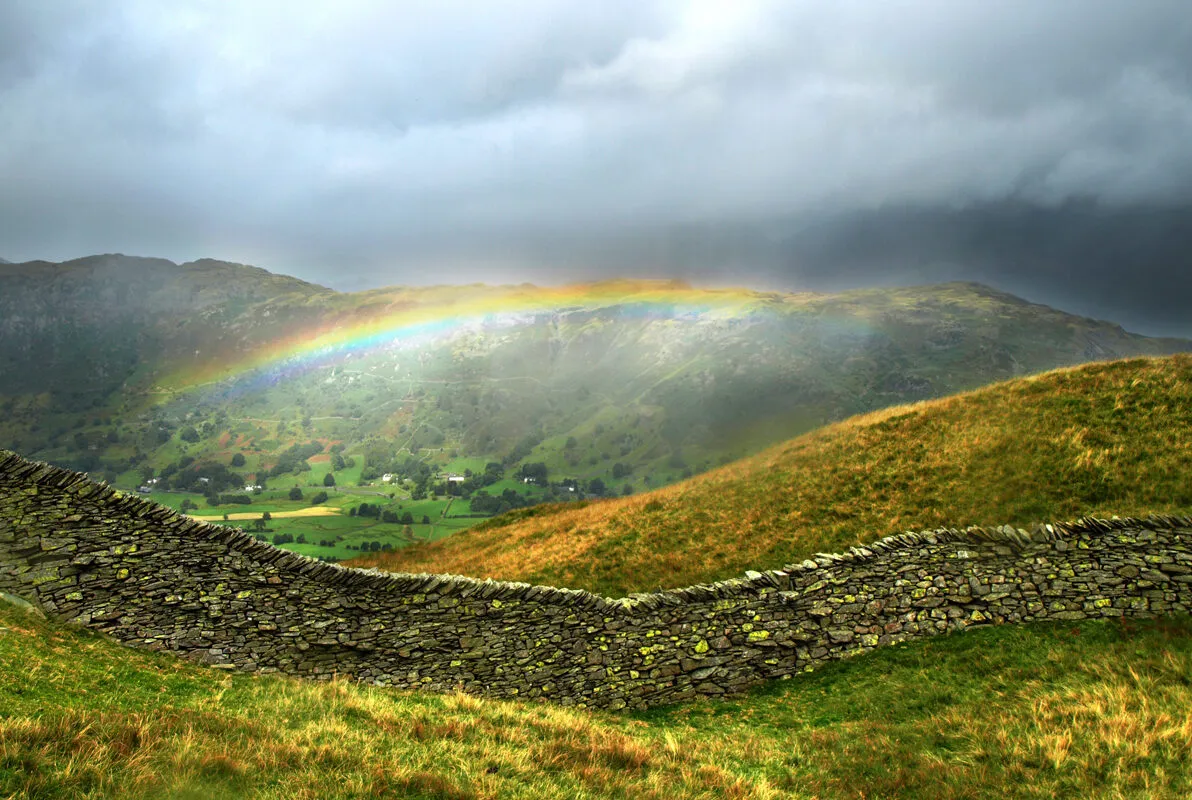
Ennerdale and Haystacks
14.2 miles (22.9km)| 8 hours | challenging
Just getting to the remote shores of Ennerdale Lake is something of an adventure. Navigating the winding, narrow roads requires some skill. Then, as you approach the lake, the road gives way to rubble tracks, which lead to rough-surfaced car parks. The lake shore can only be reached on foot. The result is that solitude and tranquility are more readily found in Ennerdale than in any other Cumbrian valley.
Footpaths completely circle the lake, and are accessible from either of the two car parks, Broadmoor Wood to the west and Bowness Knott – this walk starts at the latter.
Ennerdale walking route and map
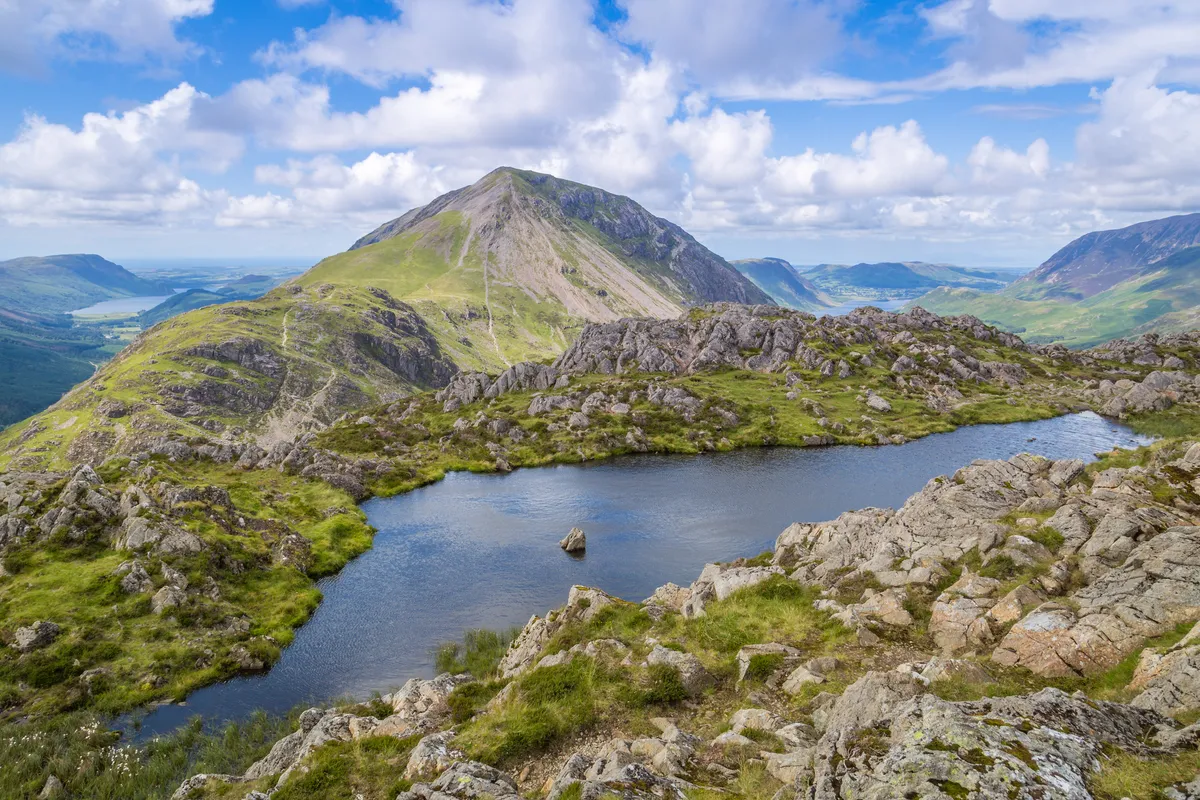
Hawkshead and Latterbarrow
3.1 miles (5km) | 2 hours | easy–moderate
Wainwright described a walk to the summit of Latterbarrow as one “needing little effort yet yielding much delight”. Set off from the traditional village of Hawkshead – with its whitewashed cottages, cobbled courtyards and quaint alleyways – and experience a wonderful winter’s wander, full of festive spirit, to the crest of this small Lakeland hill.
Latterbarrow walking route and map
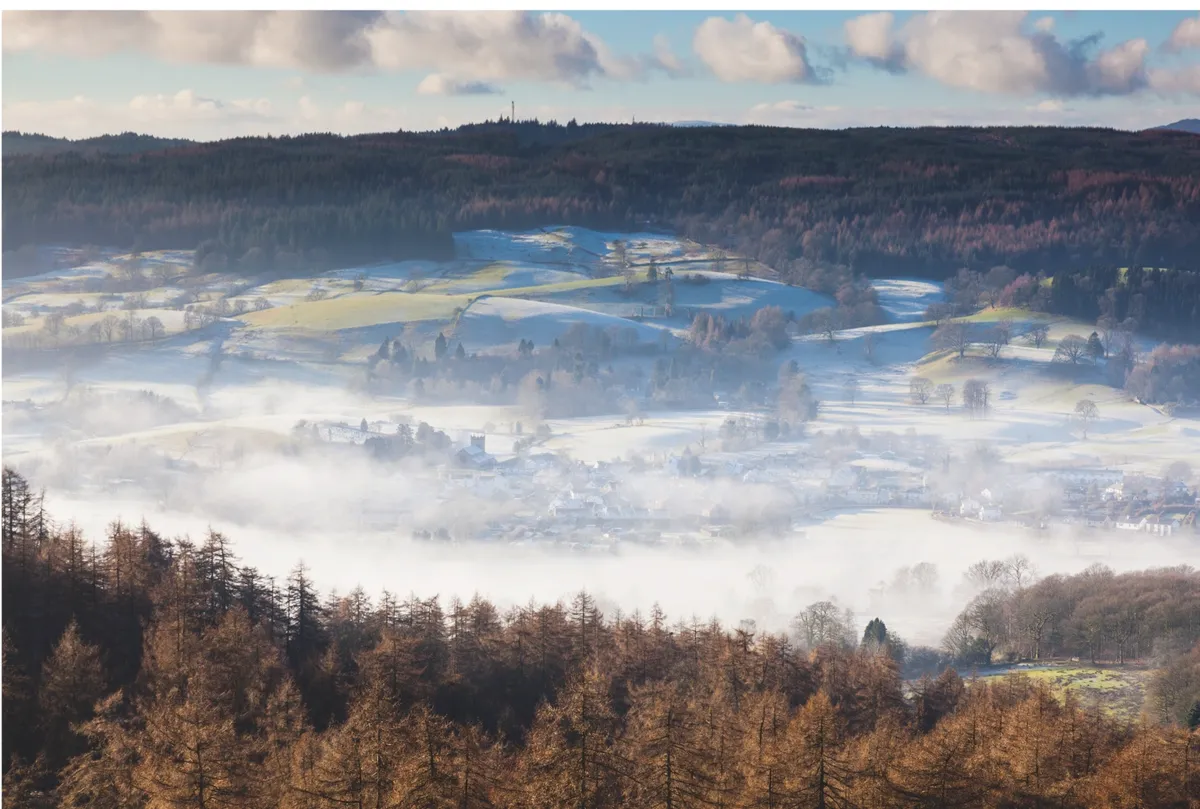
Wasdale Head Inn
4.9 miles (7.9km)| 3 hours | moderate
This venerable inn, hidden within the valleys and mountains of the Lake District, has housed some of Britain's best novelists and poets – find out what inspired these great writers with a 8km walk.
Wasdale Head Inn walking route and map
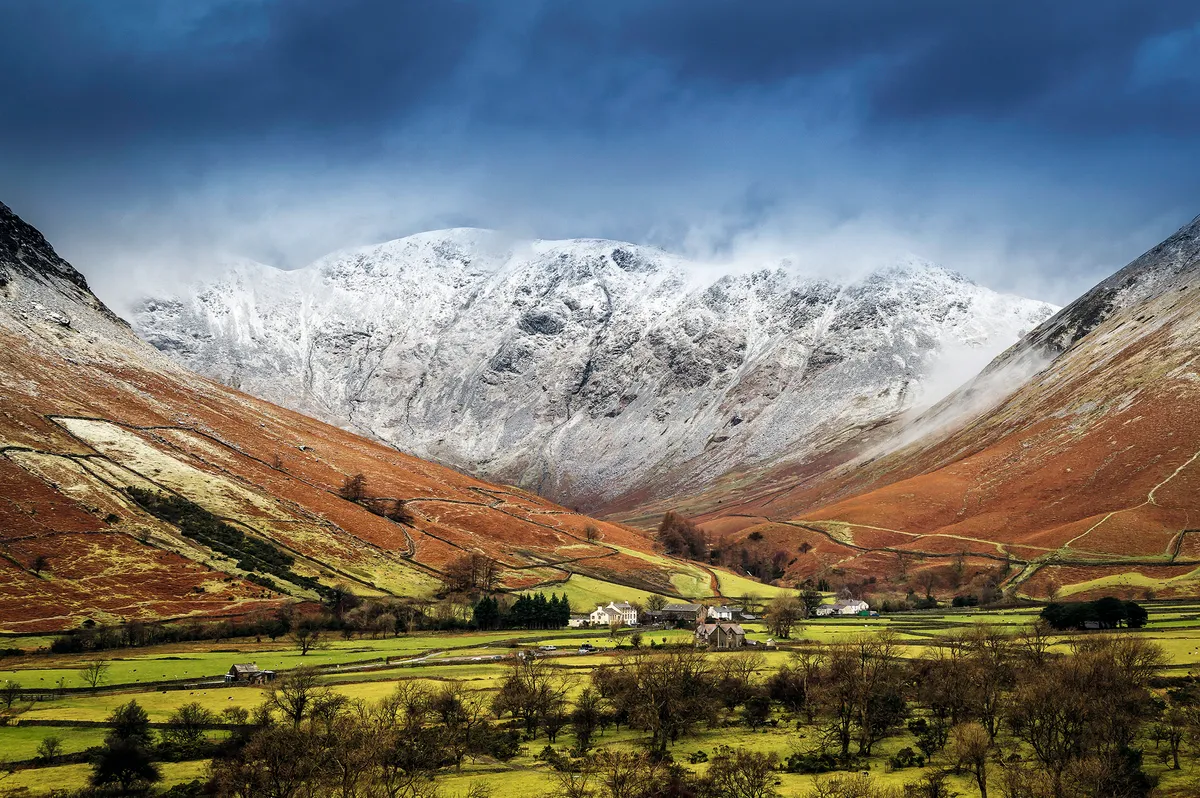
Grizedale Forest
7.5 miles (12.2km) | 4 hours | moderate
Rippling across the crags between Windermere and Coniston, Grizedale is 8,000 acres of mixed forest laced with tracks and endowed with a renowned series of outdoor sculptures.
And if you want to go at a slightly faster pace, Grizedale is home to some great cycling trails.
Grizedale walking route and map
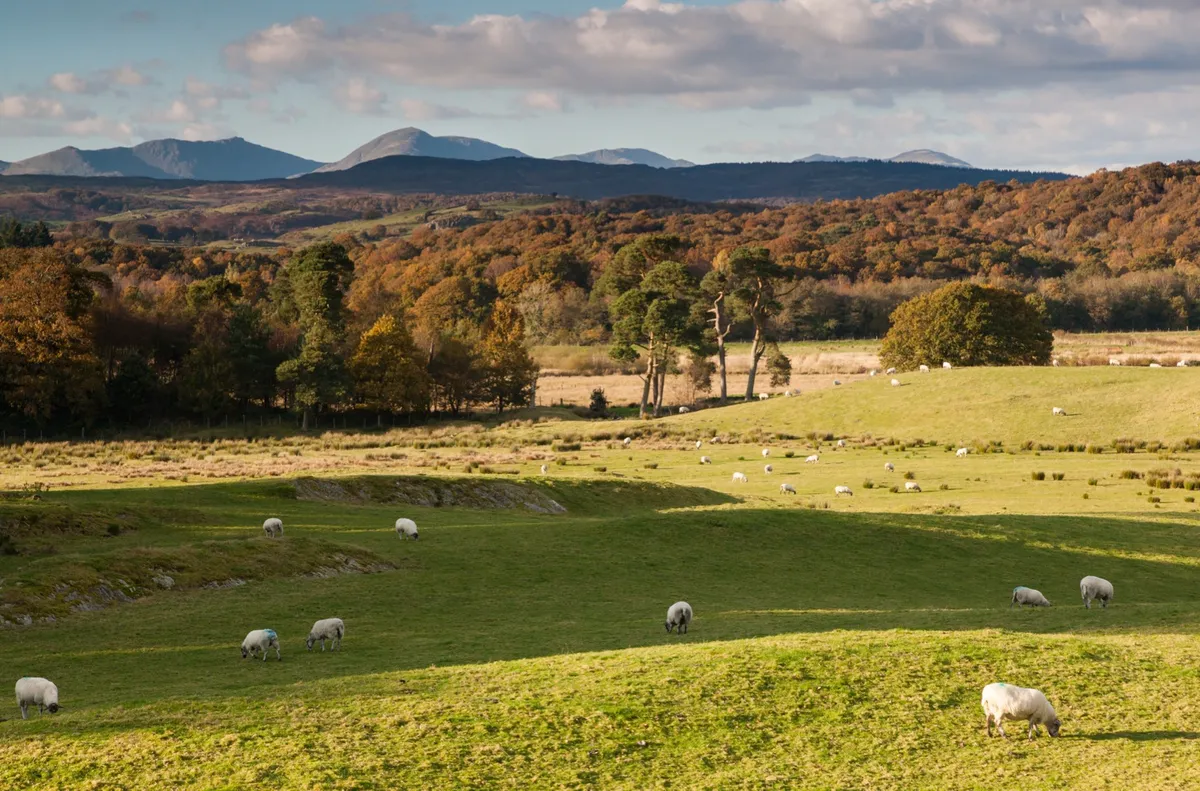
Old Man of Coniston
6.9 miles (11.1km) | 5 hours | challenging
The village of Coniston, an attractive little spot bisected by the bustling waters of a mountain stream, sits near the northern end of beautiful Coniston Water in Cumbria. Walk beside high tarns and copper-mining relics to a magical fell-top vista in the Lake District National Park.
Old Man of Coniston walking route and map
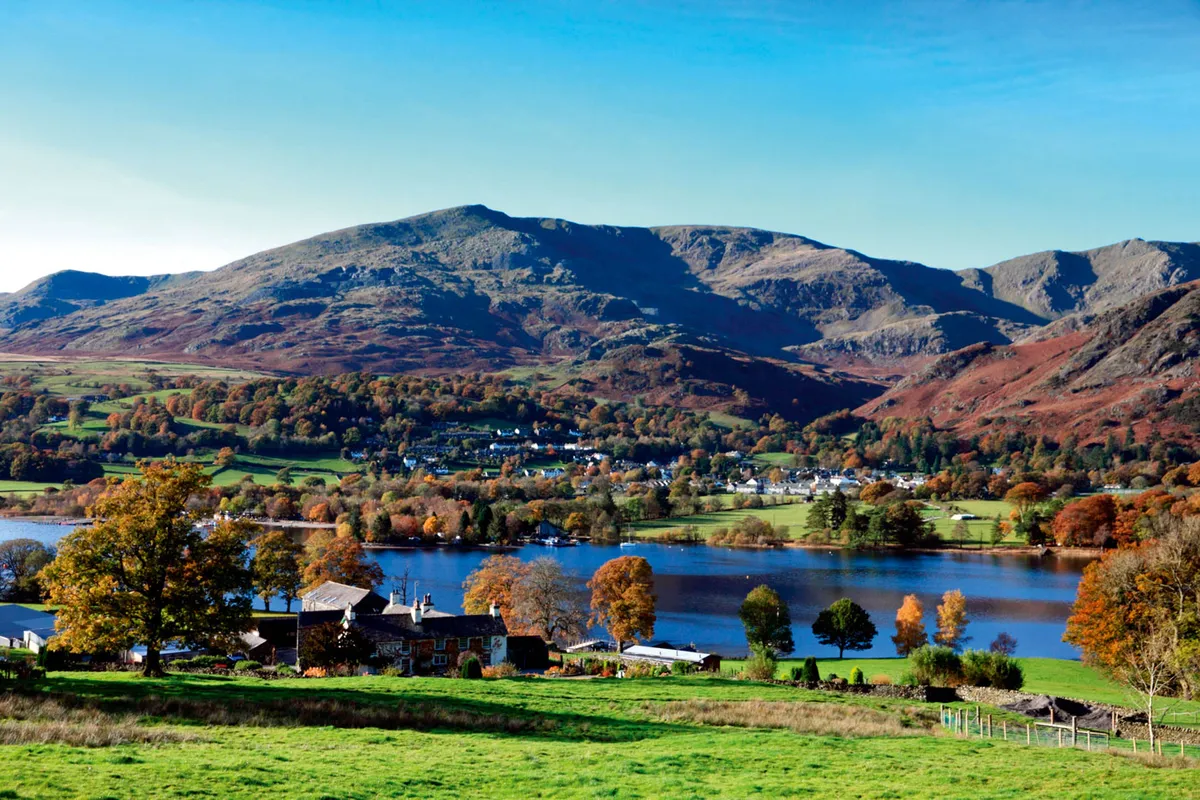
Howtown to Glenridding
6.6 miles (10.6km)| 4 hours | moderate
Famous fell-walker Alfred Wainwright called this south-shore walk – accessible by boot or boat only – “the most beautiful and rewarding in Lakeland”.
The water stretches out for 14.5km, while to the south sits the rising skyline of the Helvellyn Range. This 10.6km walk starts with a boat trip from Glenridding.
Glenridding walking route and map
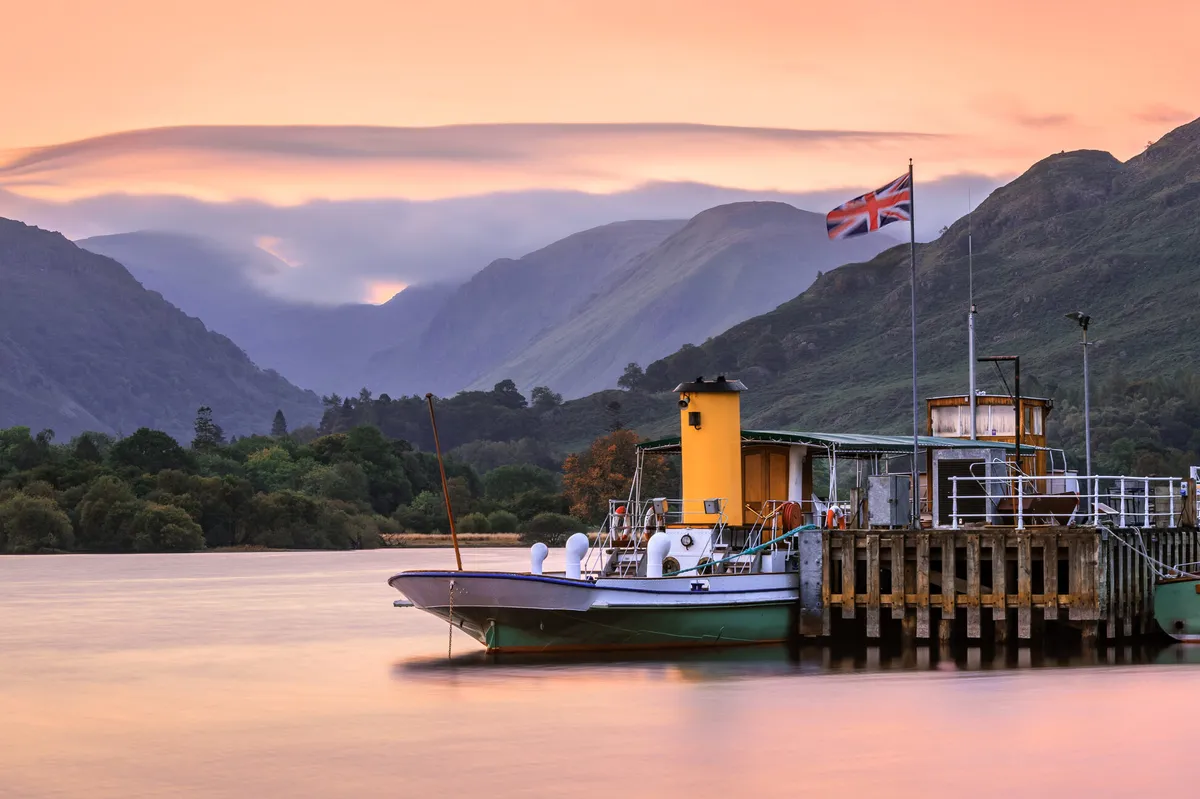
Castle Crag
4 miles (6.5km)| 2.5 hours | moderate
At a humble height of 290m (951ft), Castle Crag is a bit of a mini-mountain in comparison with other peaks in the Lakes, but its sylvan charms are what lured Wainwright to its slopes, and prompted him to include it in book six of his Pictorial Guide to the Lakeland Fells. He describes it as being “so magnificently independent, so ruggedly individual, so aggressively unashamed of its lack of inches.”
It is a little corker of a crag – explore it with a bracing 6.5km walk.
Castle Crag walking route and map

Loweswater
3.7 miles (5.9km)| 2 hours | easy–moderate
Holme Wood is a classically English mixed woodland of oak, chestnut, ash, sycamore, alder and lime, providing the dappled sunlight that bluebells seek in spring, and the perfect habitat for red squirrels.
This 5.9km route saves the best until last, so park on the roadside layby near Loweswater Hall – although alternative parking is available at Maggie’s Bridge.
Holme Wood walking route and map
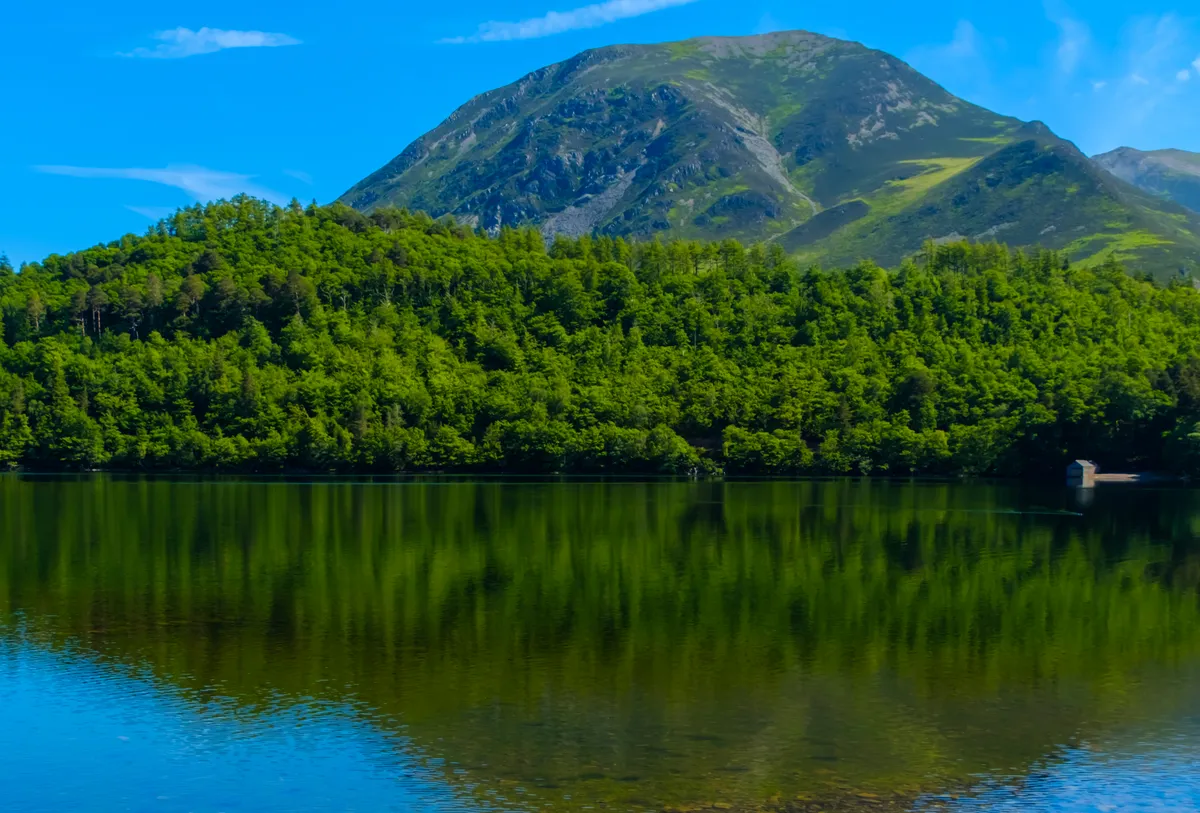
Bowness-on-Windermere to Kennel Wood
2.8 miles (4.6km)| 2 hours | moderate
A mile or two from the bustle of Bowness-on-Windermere in the Lake District National Park stands a lonely oak, at its most enchanting after a night of snowfall in winter.
Fuel up on coffee and cake in town then make for the hills in search of this wonderful winter spectacle. Visiting in spring, summer or autumn? Fear not, this tree in leaf is just as grand and still well worth the walk.
Kennel Wood walking route and map

Duddon Valley
6.2 miles (10km)| 4 hours | moderate
Poet Laureate and inveterate traveller in England, William Wordsworth loved the Lake District, but within these sceptred acres he had a particular fondness for the Duddon Valley, which he explored as a child and where he later composed a series of 35 sonnets lauding the area, recalling his time spent there contemplating the passing of life and the rugged, sylvan beauty of the countryside.
Today, it is well off the beaten track and is a richly rewarding departure beyond Lakeland’s core.
Discover this secluded corner of the Lake District that hums with memories of Wordsworth and still offers the beauty and tranquillity he sought.
Duddon Valley walking route and map
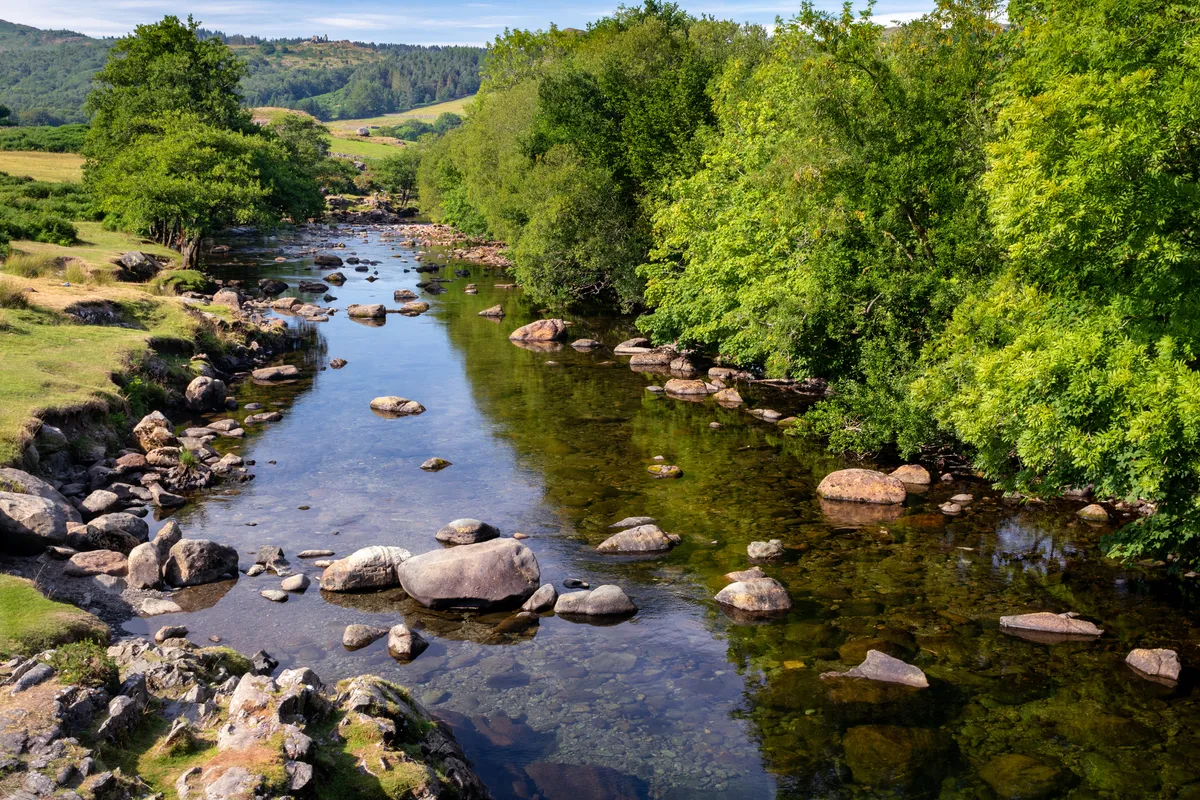
Need new walking kit? Check out our guides to the best walking boots, best walking shoes, best walking trousers, best walking socks, best walking sandals - and lots more
